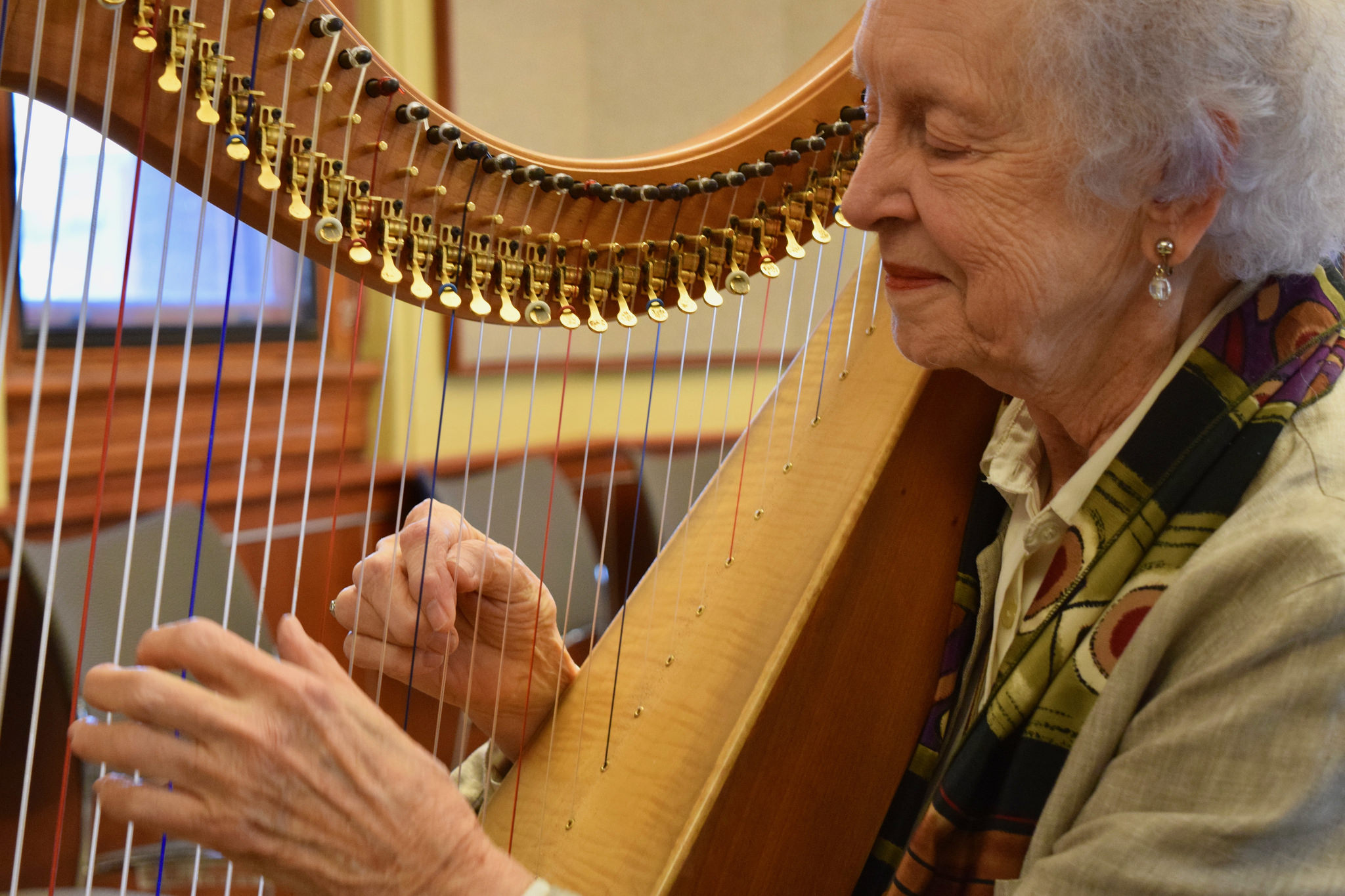Virginia Bethune: Evangelist for the harp

BY JOE SLAY
In 1996, Dick Bethune (B.D.’58) and his wife Virginia were at a crafts fair in Blacksburg, Virginia, when Dick caught sight of a harp, and he said to Virginia, “I think I could build a harp.”
Virginia, a classically trained pianist and organist, responded, “Well, I think I could play a harp.”
Before too much time had passed, Dick had built at least eight of the instruments, and Virginia had not only become proficient, but she discovered that the harp and its particular “vibrations and resonance” had healing properties. It helped those suffering from severe medical issues and it brought peace for those facing death.
Virginia Bethune trained through a program called “Music for Healing and Transition” and qualified as a certified music practitioner. The energetic and buoyant 81-year-old emphasizes she is not a “music therapist,” with the four-year degree which that requires, and is rather “a therapeutic musician,” with an extraordinary enthusiasm for the beauty and the power of the harp.
For five years, she was “musician in residence” at the University of Virginia Hospital. She has played for 10 years at Sentara Rockingham Memorial Hospital in her hometown of Harrisonburg, Virginia.
“I’ve had the opportunity to play in intensive care units, in radiation clinics, and in chemo infusion clinics, one-on-one with the patient,” she said. “It is humbling to be invited to go through the door and play at bedside.”
She and Dick have produced nine CDs, with proceeds from sales raising more than $100,000 for Habitat for Humanity. Virginia runs a six-hour weekend workshop, promising students that by the end of the workshop, even someone who cannot read music will be able to play “Ode to Joy” and part of Pachelbel’s familiar canon. “It’s just eight notes in the bass line,” she laughs. “And the harp is the most ‘accessible’ instrument that exists.”
She is an evangelist for the harp and its healing qualities.
“For someone with arrhythmia, an irregular heart rate, we tap into a pendulum effect where two bodies come into synchronicity, to maintain the same rhythm,” she said. “We choose the rhythm of our music to maximize the healing effect for a more healthy heart rate. You can see it on the monitor.”
The resonance and vibrations released through the playing of harp strings is akin to the effect that Native American and Asian cultures have embraced for centuries, through drumming, chanting, and toning; and using those mechanisms in healing. It’s all that a lot of cultures have ever had, she said. It stands to reason that this vibration and resonance can affect a person’s body, mind, and spirit.
“Music healing has taken root in churches…and is becoming an extension of pastoral care.
“It is,” she said, “a strong ministry.”
Virginia Bethune is the daughter of John Redhead, Jr. (B.D.’29; Th.M.’30).

